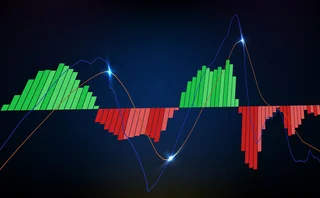
How to account for banks’ contribution to CO2 emissions
Price adjustments will depend on individual counterparties’ carbon footprints
When contemplating the industries that pose the greatest threats to the planet, banking may not be the first that springs to mind. Unlike the hydrocarbons or transport sectors, the part it plays in generating carbon emissions is mostly indirect, and involves facilitating the business of energy-intensive clients via loans or derivative contracts.
Yet the impact of these activities is real enough. Under the Greenhouse Gas Protocol, these indirect contributions are referred to as Scope 3 emissions, and measuring them is key to steering banks’ portfolios towards carbon neutrality by 2050. The Net-Zero Banking Alliance, which comprises almost half of the global banking industry, has committed to that target and its members have begun taking steps to reach it.
Most banks are doing so not through a codified set of regulations but by following a rule of thumb: if a client or counterparty is projected to be significantly exposed to climate risk over the duration of a contract, a deal might not go ahead.
A rigorous framework for the measurement and the accounting of carbon emissions has yet to be established. However, Chris Kenyon, global head of quantitative innovation at MUFG, risk expert Mourad Berrahoui and Andrea Macrina, a professor of mathematics at University College London, are conducting research into the form such a framework might take. They recently presented their latest findings, in which the main innovation is the CO2-equivalent valuation adjustment (CO2eVA), a measurement based on the carbon equivalence principle the trio introduced earlier this year. CO2eVA can be positive or negative, depending on whether it refers to carbon emissions or carbon sequestration.
Any solution to the challenge of reaching net-zero will involve aligning incentives and costs. “What [CO2eVA] provides is a framework for quantifying the carbon mitigation cost of reducing those Scope 3 emissions to zero by 2050,” says Kenyon. He adds that this method applies to internal cost calculation, and therefore helps banks assess the merits of individual deals.
From the modelling perspective, the approach is based on what Christoph Burgard and Mats Kjaer presented in 2013 and 2017 on how the price of a derivative needs to be adjusted to account for the counterparty’s creditworthiness and for both the funding cost and the strategy employed to finance a deal.
“We’re really pleased that we could extend Burgard and Kjaer’s approach using a double decomposition, and get a clean answer for what a Scope 3 valuation adjustment should look like,” says Kenyon. “We worked out how to calibrate the model and deal with the P and Q measures in a rigorous way.”
Kenyon, Berrahoui and Macrina’s model uses the counterparty’s carbon footprint to assess the contribution that the financial support provided by a bank would make to carbon emissions. The model also uses the climate scenarios provided by the Network for Greening the Financial System to make its projections.
To Burgard and Kjaer’s approach, the three researchers have added a new variable: the carbon price. To factor in the time value of transactions, they also include a parameter that progressively increases from zero in 2023 to one in 2050. This has the effect of overweighting the cashflows that are being projected closer to the deadline.
They give two stylised examples of an airline and a shipping company to compare the credit valuation adjustment and funding valuation adjustment figures with CO2eVA figures. For deals of short tenors (five years), CO2eVA figures are of comparable magnitude to the corresponding CVA and FVA figures. However, as the tenor stretches to 20 years and nears the 2050 deadline, the CO2eVA figures are five to 10 times higher than the corresponding CVA and FVA figures, displaying a non-linear relationship that is curved by time. This is a typical non-linearity in the climate space, driven by the expectation that carbon prices will increase significantly to 2050.
The proposal for the internal cost calculation of CO2eVA is only an intermediate step in Kenyon, Berrahoui and Macrina’s research. Ultimately, a higher cost to the bank will be reflected in higher costs for its clients, and the trio are conducting follow-up research to determine how much banks will need to charge clients and how CO2eVA will affect derivatives pricing.
“The next chapter of our work shows how these principles can be used to adjust derivatives’ prices”, says Berrahoui.
Shareholder accountability
Under their proposed framework, a carbon-intensive deal may become prohibitively costly and push the counterparty to either decarbonise its businesses or walk away from the deal. Berrahoui points out that some banks are already trying to reduce carbon risk by divesting from high emitters with low credit ratings. Kenyon adds that the new model “enables a finer control of moving the portfolio from one place to another place in accordance with good business. Ultimately, this is about being responsible to shareholders and assessing whether the bank is being paid for the risk it’s taking. If not, it’s not being responsible to its shareholders.”
Whether banks will adopt a common methodology to assess carbon risk remains uncertain. For Berrahoui, there are three obstacles, the first of which is data. Banks will need to obtain reliable emissions figures from clients or public sources, and these cannot always be guaranteed. “To calculate Scope 3 emissions, banks need to know their clients’ carbon impact,” he says.
The second obstacle is the limited scope of the Partnership For Carbon Accounting Financials, an accounting standard that differs from product to product and which does not currently include swaps and certain other types of derivative. This means banks do not currently get credit for reducing Scope 3 emissions linked to these products in their financial reports, though PCAF says it is working on ways to account for carbon emissions in financial reporting. Berrahoui believes PCAF ought to include more derivatives, such as swaps and swaptions, within its scope.
The third is the very absence of any methodology for measuring and accounting for a bank’s Scope 3 emissions – something Kenyon, Berrahoui and Macrina are attempting to address in their research.
Notwithstanding these obstacles, Kenyon believes there is increasing momentum in banking to reduce the emissions for which the industry is indirectly responsible, “both because the regulators are asking more and more questions and also because people have more experience of unusual climate events”.
Editing by Daniel Blackburn
Only users who have a paid subscription or are part of a corporate subscription are able to print or copy content.
To access these options, along with all other subscription benefits, please contact info@risk.net or view our subscription options here: http://subscriptions.risk.net/subscribe
You are currently unable to print this content. Please contact info@risk.net to find out more.
You are currently unable to copy this content. Please contact info@risk.net to find out more.
Copyright Infopro Digital Limited. All rights reserved.
You may share this content using our article tools. Printing this content is for the sole use of the Authorised User (named subscriber), as outlined in our terms and conditions - https://www.infopro-insight.com/terms-conditions/insight-subscriptions/
If you would like to purchase additional rights please email info@risk.net
Copyright Infopro Digital Limited. All rights reserved.
You may share this content using our article tools. Copying this content is for the sole use of the Authorised User (named subscriber), as outlined in our terms and conditions - https://www.infopro-insight.com/terms-conditions/insight-subscriptions/
If you would like to purchase additional rights please email info@risk.net
More on Views
Filling gaps in market data with optimal transport
Julius Baer quant proposes novel way to generate accurate prices for illiquid maturities
Georgios Skoufis on RFRs, convexity adjustments and Sabr
Bloomberg quant discusses his new approach for calculating convexity adjustments for RFR swaps
A dynamic margin model takes shape
New paper shows how creditworthiness and concentrations can be reflected into margin requirements
How HSBC got better at pricing share buy-backs
Monte Carlo approach generates faster, more reliable pricing for complex deals
Degree of influence 2023: Quants thrive on volatility
Climate, crypto and market impact also featured among the top research topics in 2023
Exploiting causal biases in market impact models
Model calibration gains efficiency by including biased but adjusted trading data
Skew this: taking the computational burden off basket options
Dan Pirjol presents a snap formula for estimating implied volatility skew in an instant
How a machine learning model closed a hidden FX arbitrage gap
MUFG Securities quant uses variational inference to control the mid volatility of options








